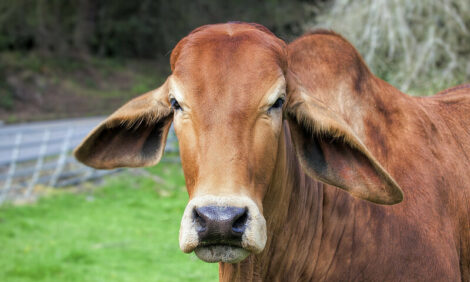



Scottish Red Meat Sector Worth £2.1 billion
UK - The Scottish red meat industry made a £2.1 billion contribution to the economy of Scotland in 2012, according to the Scottish Red Meat Industry Profile launched this week by Quality Meat Scotland (QMS).The document also reveals that around 27,000 jobs were directly provided by the rearing of beef cattle, sheep and pigs, along with the primary processing sector.
However, the challenges the industry has been facing are also evident in the new publication.
Stuart Ashworth, Head of Economics Services, QMS said the Scottish suckler cattle herd decreased in size for a second year during 2012.
“In 2012 the Scottish suckler herd was 1 per cent smaller than in 2011, at 517,000 head, taking the herd size contraction since decoupling to 9 per cent . The increase in cow slaughterings will have contributed to the contraction of herd size,” said Mr Ashworth.
“However, following more than a decade of decline the breeding ewe flock edged higher by 0.6 per cent , taking numbers back above 2.8 million head,” said Mr Ashworth.
Further restructuring of the pig sector resulted in the sow herd contracting sharply for a second year, with sow numbers declining by 13 per cent to 28,100 head.
“For a second year, beef production at a UK level slowed as the year progressed and producer prices for cattle moved sharply higher.
“Farm-gate lamb prices weakened significantly later in the year, despite the negative impact of wet weather on domestic production, as import volumes jumped. Pig prices finished 2012 on a strong footing, despite higher UK production.”
In real-terms, cattle producers saw prices outstrip increased living costs for a second year, while there were more modest real term gains for pig farmers. By contrast, the average farm-gate lamb price fell by 8 per cent in real terms.
Cattle slaughterings at Scottish abattoirs fell by 8 per cent to 480,000 head, with the total volume of beef produced down by 7.5 per cent . Abattoir revenues from beef sales nevertheless rose 4 per cent as beef became a more expensive commodity.
Both the sheep kill and the total volume of sheepmeat produced fell by 10 per cent in 2012. However, abattoir sales revenue grew by 2.5 per cent due to strong prices early in the year. The closure of Scotland’s largest pig slaughtering facility in October 2012 resulted in the Scottish pig kill falling back by 7.5 per cent in the calendar year.
“Scottish red meat production in 2012 totaled 243,500 tonnes, a year-on-year decline of 21,400 tonnes, or 8 per cent ,” observed Mr Ashworth.
“Looking at retail prices, beef averaged nearly 11 per cent higher than the previous year, while pork was almost 7 per cent more expensive. However, lamb prices averaged less than 2 per cent higher, making it a more competitively priced protein.”
Annual use of red meat in the UK declined for a fifth year, with consumption down across all three species.
“Higher retail prices for beef and pork stymied purchased volumes, while tight global sheepmeat supplies resulted in limited availability for much of the year,” said Mr Ashworth.
On average, agricultural input costs edged higher in 2012, with energy costs also picking up.
However, with oil prices more stable, relative to 2011, annual energy cost inflation was held down as were fertilizer costs, he added.
However, Mr Ashworth observed, an increase volume of inputs had been required during the year as a result of the poor 2012 weather conditions, result in increased costs for producers.
TheCattleSite News Desk


